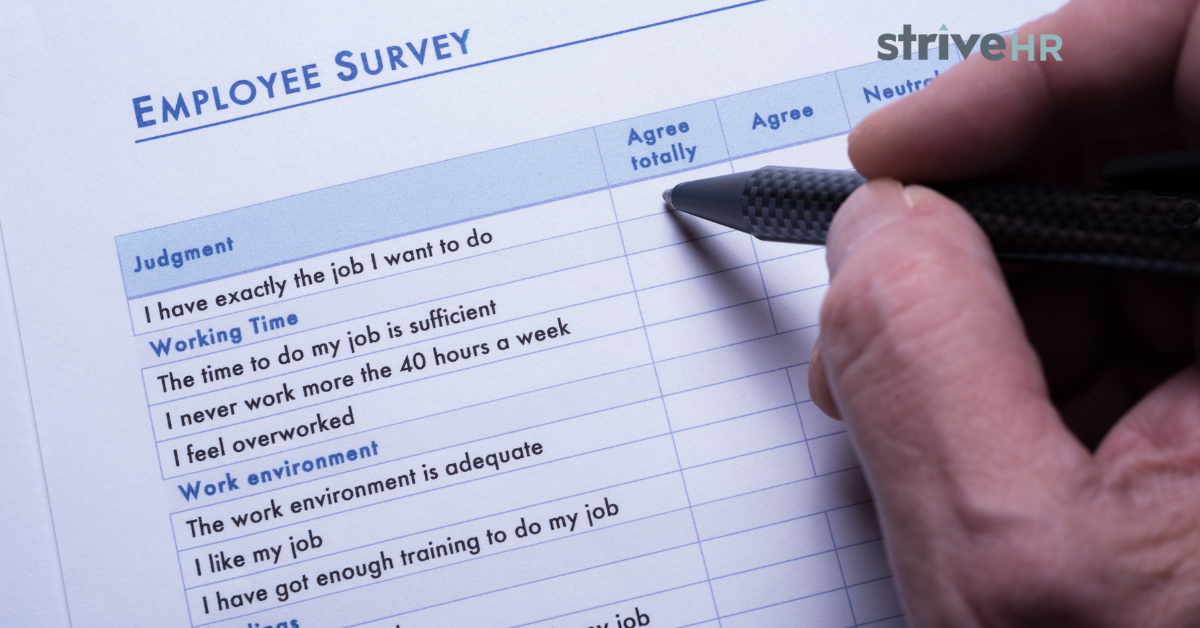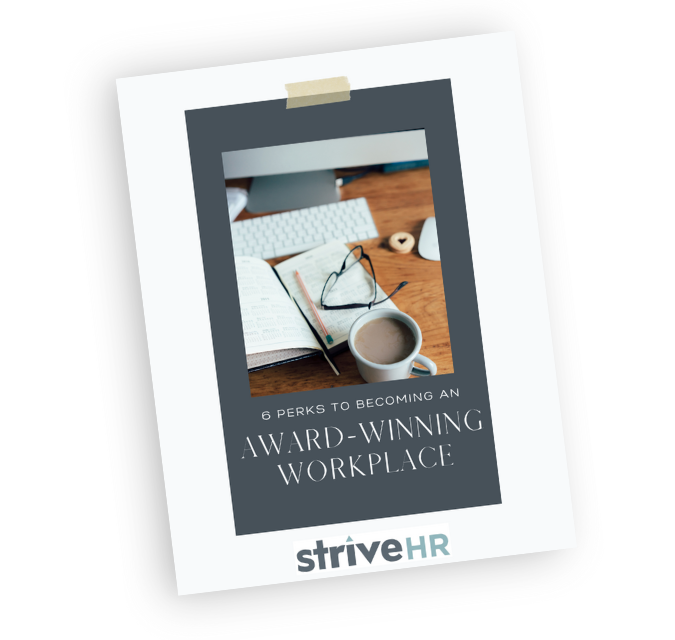Employee engagement surveys provide a valuable channel for understanding employee opinions, identifying areas for improvement, and cultivating a culture of transparency and open communication. These surveys offer employees a safe space to share their honest opinions, concerns, and ideas, without fear of repercussions.
By gathering this feedback, organizations can gain valuable insights that inform decisions impacting business operations and people strategies. However, the effectiveness of these surveys hinges on one crucial aspect: participation rates.
What is a Engagement Survey Participation Rate
The participation rate in an employee engagement survey is the percentage of employees that respond to the survey. It is an important metric for organizations to evaluate when determining the effectiveness of their engagement survey.
A good participation rate can range from 65% – 95% according to Culture Amp and Flexsurveys. At striveHR, we recommend a participation rate goal of 85% in order to gather a strong representation from employees.
Why Participation Rates Matter
Achieving high participation rates in employee engagement surveys is not merely a target; it is important for ensuring the accuracy and reliability of the data collected. Participation rates drive meaningful insights. These insights give you a tremendous amount of data for which you can not only learn about how your employees feel with regards to working for your organization, but also provide information to help you with areas for improvement as well as reasons to celebrate what is being done well at your organization.
Here are three compelling reasons why participation rates matter:
Eligibility: Many survey administrators, including those conducting surveys linked to workplace awards, establish minimum participation rates to validate the data. Without adequate participation, surveys may not be considered valid, and organizations may risk disqualification from awards or recognition programs.
Representation: Employee engagement surveys aim to provide an overall representation of employee feelings and opinions across the organization. Achieving a high participation rate ensures that the survey results reflect the views of a wide range of employees, providing a more accurate and comprehensive understanding of the workforce’s overall engagement levels.
Benchmarking: Employee engagement surveys are not one-time events; they represent a continuous process of gathering feedback and measuring progress over time; think continuous improvement. A high participation rate allows organizations to track their progress in improving employee engagement and benchmark their performance against industry standards or their own previous survey results.
Concerns to Consider When Focusing on Participation Rates
Although you are ultimately striving to gather as much feedback from your employees as they are willing to share, it’s important to recognize there could be concerns from your employees. Organizations should do everything they feel is possible to assure the employees their concerns are completely valid, yet the organization is dedicated to honoring the process.
Here are some concerns your employees may be experiencing:
Sharing Honest Feedback: Some employees may be hesitant to share honest feedback, especially if they fear negative consequences. To address this concern, emphasize the confidentiality of the survey process and assure employees that their feedback will be used to make positive changes in the workplace.
Survey Fatigue: Employees may be reluctant to participate in surveys due to survey fatigue, especially if they are frequently asked to provide feedback. To reduce survey fatigue, ensure that surveys are concise, relevant, and valuable to employees. Clearly communicate the purpose of the survey and how the feedback will be used to make improvements.
Action From Management: Employees may be skeptical that their feedback will be heard or acted upon. To address this concern, demonstrate a commitment to transparency and open communication. Share the survey results with employees and provide clear information on how their feedback will be used to make positive changes.
Strategies to Boost Participation Rates
You can maximize the effectiveness of employee engagement surveys through strategies to boost participation rates. By inviting your employees to respond to your engagement surveys and showing them that you value their feedback, you increase the opportunity to have more employees respond.
Here are a few strategies that will boost your participation rates:
Emphasize the Importance of Participation: Clearly communicate to employees the importance of their feedback and how it will be used to improve their work experience. By letting your employees know that their participation is appreciated and valued, this empowers them to shape the future of the organization.
Designing the Survey Process: Utilize a user-friendly survey system that is accessible, easy to navigate, and can be completed in a reasonable amount of time. Ensure the categories included cover the broad range of tenure, departments and other demographic data without jeopardizing anonymity (more on that soon).
Do Not Offer Incentives: Welcoming your employees to share their feedback should be done so voluntarily, not one which employees feel bribed or required to participate. Avoid the consideration of offering incentives to participate, especially if your engagement survey is in conjunction with a workplace awards program as this would disqualify your participation.
Promote Anonymity and Confidentiality: Assure employees that their responses will remain confidential and will not be linked to their individual identities. This creates a safe space for honest feedback without fear of repercussions.
Communicate Survey Results: Share the survey results with employees and provide clear information on how their feedback will be translated into actionable steps. This demonstrates that their input is valued and leads to positive change. By not sharing the results with your employees or not acting upon what you learned is likely to result in your employees not providing feedback to you in the future.
Conclusion
Employee engagement surveys serve as a powerful tool for understanding employee opinions and feedback, identifying areas for improvement, and fostering a culture of open communication. Achieving high participation rates is essential for ensuring the accuracy and reliability of the data collected, enabling organizations to make informed decisions that enhance employee engagement and drive organizational success. By implementing effective strategies to encourage participation, organizations can harness the power of employee feedback to create a thriving empowered and engaged workforce.
If your organization is looking for an advisor to help with your employee engagement and workplace culture, striving to become an award-winning workplace, or in need of a business coach for HR, let’s talk about how I can help you. Schedule a time to chat HERE.




